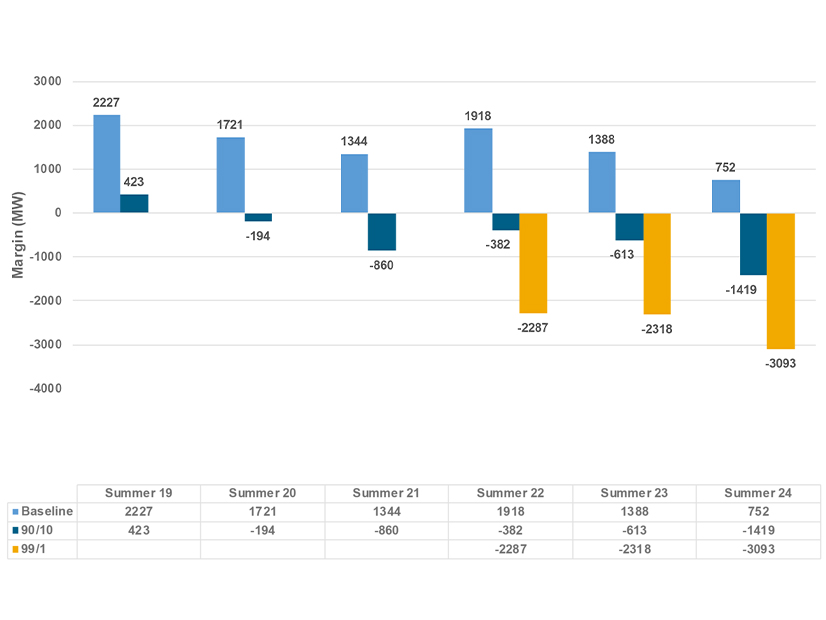
NYISO officials told stakeholders May 16 that the ISO expects enough capacity to serve peak load this summer under normal conditions, but hotter-than-expected weather could lead it to resort to emergency procedures.
The ISO expects to have about 34.9 GW of capacity to serve an expected peak load of about 31.5 GW and maintain its operating reserve requirement of 2.62 GW under its baseline forecast. The 752-MW capacity surplus is down 45.8% from last summer, continuing a downward trend.
NYISO saw a peak load of about 30.2 GW last summer, less than its baseline forecast of 32 GW.
The surplus would become a deficiency under extreme weather conditions, namely a sustained heat wave in which average daily temperatures stay in the high 80s or above over a multiday period. NYISO would be forced to resort to its emergency operating procedures to unlock an additional 3,275 MW to maintain resource adequacy. Under the most extreme scenario examined, the capacity margin would be a razor-thin 182 MW.
Aaron Markham, NYISO vice president of operations, told the Operating Committee that the main driver in the reduction of surplus from last year is a nearly 1.4-GW decrease in net imports from neighboring balancing authorities. He also noted a 900-MW increase in total available capacity from last year is mostly offset by an increase in assumed unavailable capacity from derates.
The ISO has added a net 393 MW in generation since July 1, 2023, with 452 MW of new facilities — mostly wind and solar — going into service. But “the average forced outage rate of those intermittent resources is quite high,” Markham said. “Probably 80% of that [additional capacity] is assumed available during the peak load hour, depending on when it occurs.”
NYISO also presented “more focused” assessments for subregions, including New York City, the surplus for which is 348 MW without taking special-case resources into consideration.
Howard Fromer, of PSEG Power New York, asked what the ISO would do if its assessment showed a deficiency under its baseline forecast, if anything.
“There are a number of tools in the toolbox, whether they be emergency operating procedures; running the transmission system to emergency transfer ratings,” Markham replied. “There’s a number of actions that, even if this showed negative, and we actually experienced those conditions in real time, would be implementable before we would need to shed load in New York City.”
NYISO’s assessment followed a similar one from NERC released the day before. (See related story, NERC Summer Assessment Sees Some Risk in Extreme Heat Waves.)
“Reliability margins have declined by more than 1,000 MW in just the last two years. That’s a significant issue, especially when we’re impacted by heat waves,” NYISO COO Emilie Nelson said in a press release. “As demand is forecasted to rise in the coming years, this trend will continue to pose a challenge to system reliability.”
The ISO also noted in the press release that its Comprehensive Reliability Plan found that reliability margins will continue to shrink across the state through 2032. (See NYISO’s 10-Year Forecast: Challenges Ahead, but No Immediate Needs.)


